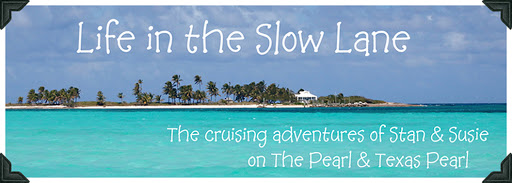Our time at the Finca La Amistad Lodge came to an end...we really enjoyed practicing our Spanish with Janet and Isabelle. Maybe next year we'll be able to carry on a real conversation in Spanish. We drove down the west side of the volcanos and over to the coast to Puntarenas to check out the water. It's located on the Gulf of Nicoya...as close to the ocean as we're going to get on this trip. We enjoyed seeing the boats, adding another lighthouse to our list of lighthouses and eating lunch overlooking the harbor. The weather was nice, the roads were great and it was nice to see a little bit more of the Costa Rican countryside.
The Puntarenas Lighthouse
Boats in the harbor in Puntarenas
Our next stop was Atenas, it sits at an elevation of 2300 feet above sea level and is known for having one of the best climates in the world. The views were incredible on the way up from the coast. I can see why so many expats from the US live in the area. The town is situated on the Central Valley's western edge, just 16 mile from Costa Rica's International Airport outside of San Jose. It made a great place for us to visit before flying home. The views from our hotel were breathtaking...we could lay in bed and enjoy the views of the surrounding countryside. It was amazing.
The views along the road from Puntarenas to Atenas
Atenas is surrounded by mountains and coffee plantations and is known as a very prosperous agricultural center. The central park in the middle of town is a popular site to relax and people watch. The palm trees above the park are full of parrots and toucans. Cafes and shops around the park offer popular Costa Rican cuisine and traditional Costa Rican clothing.
The square in Atenas
The square in Atenas
The Barons Resort


































































